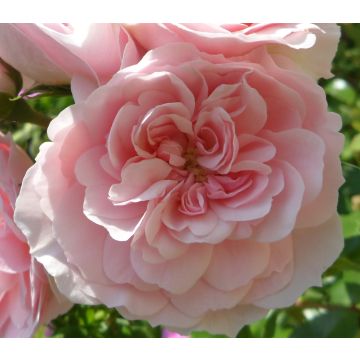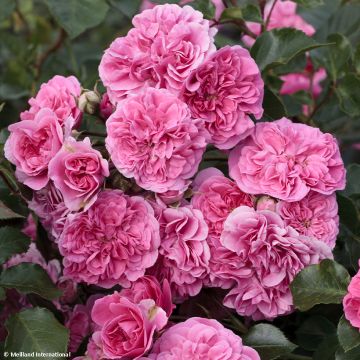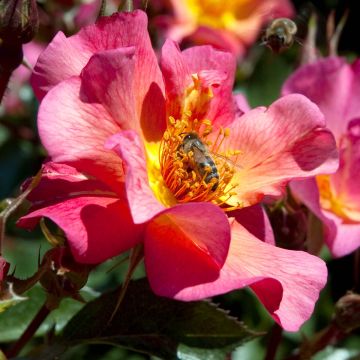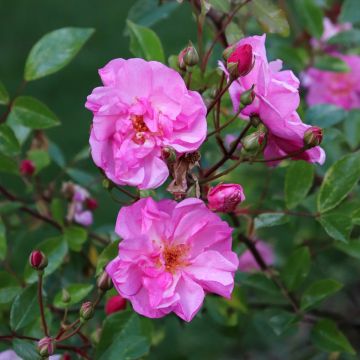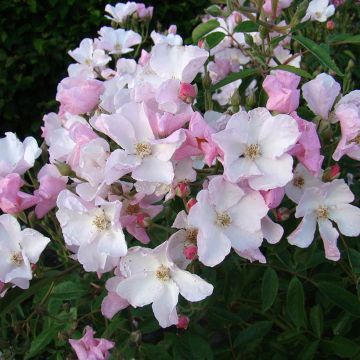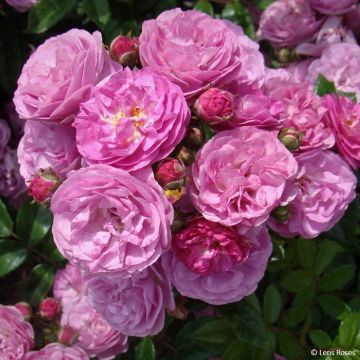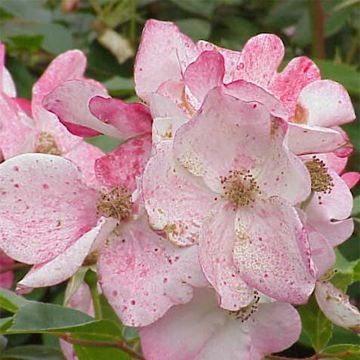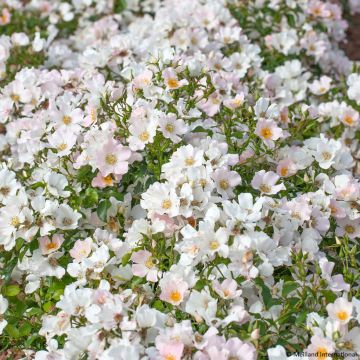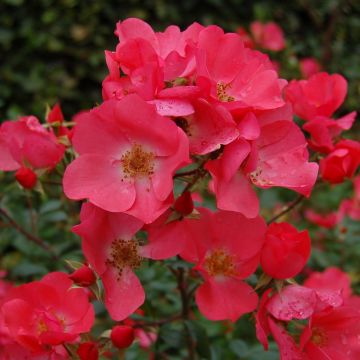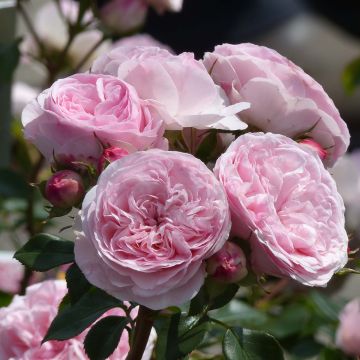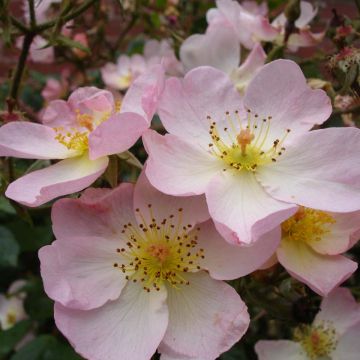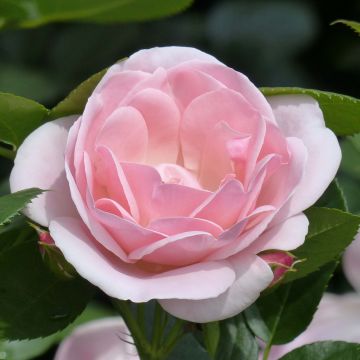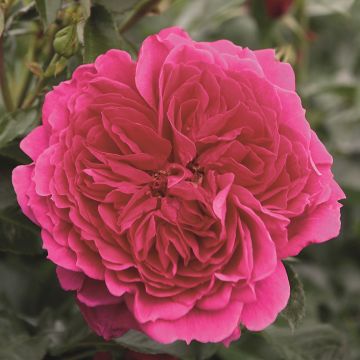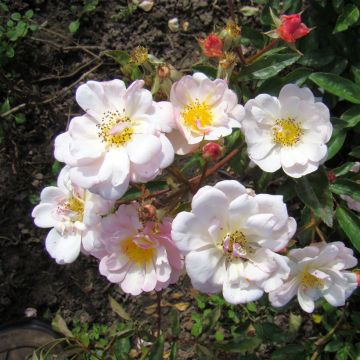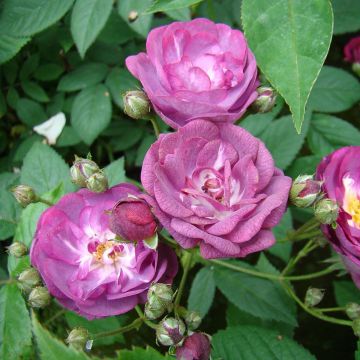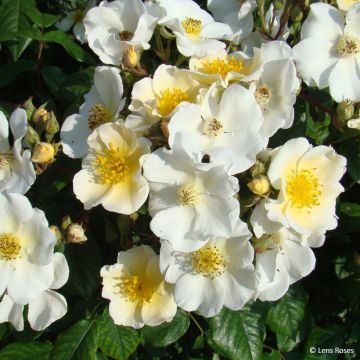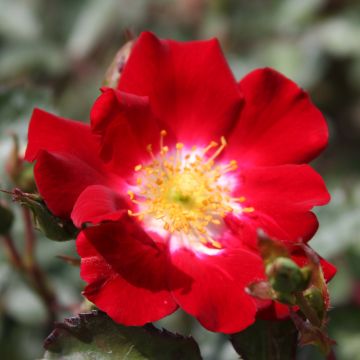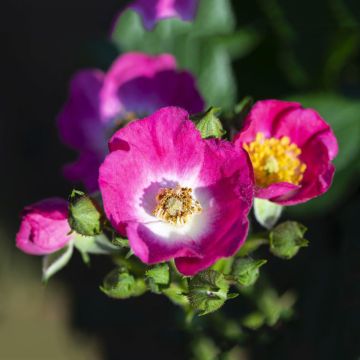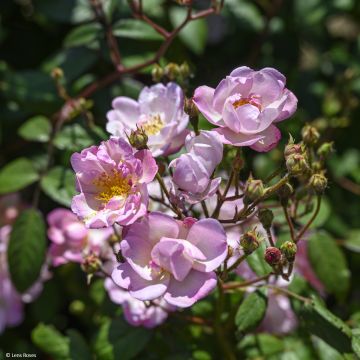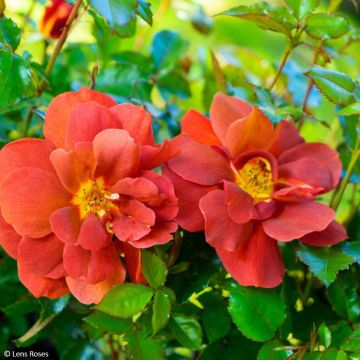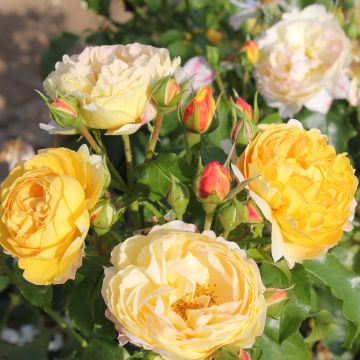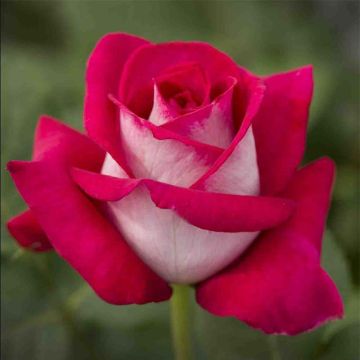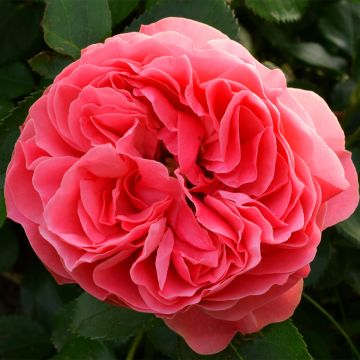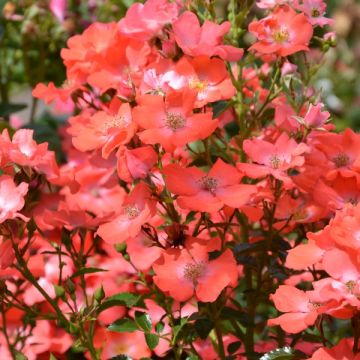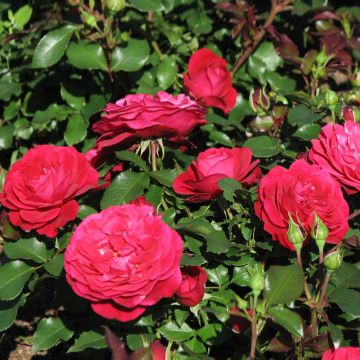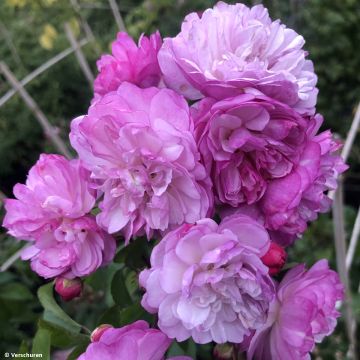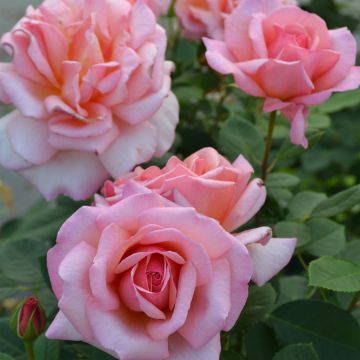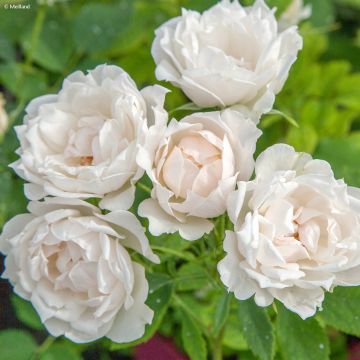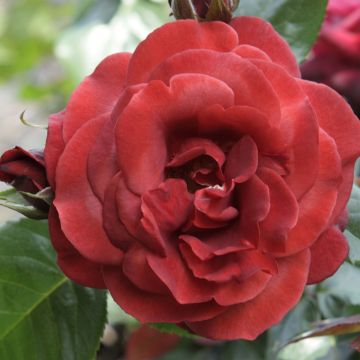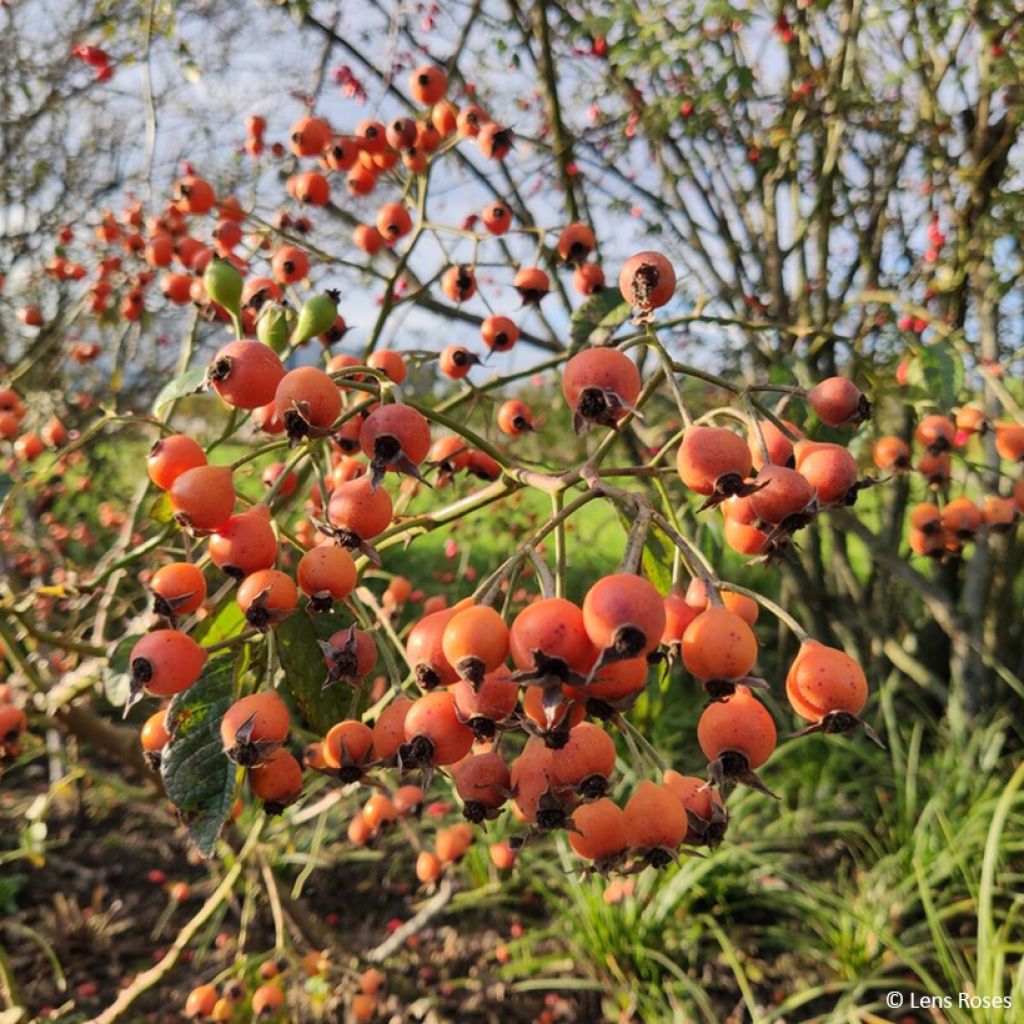

Rosa x moschata 'Kathleen'
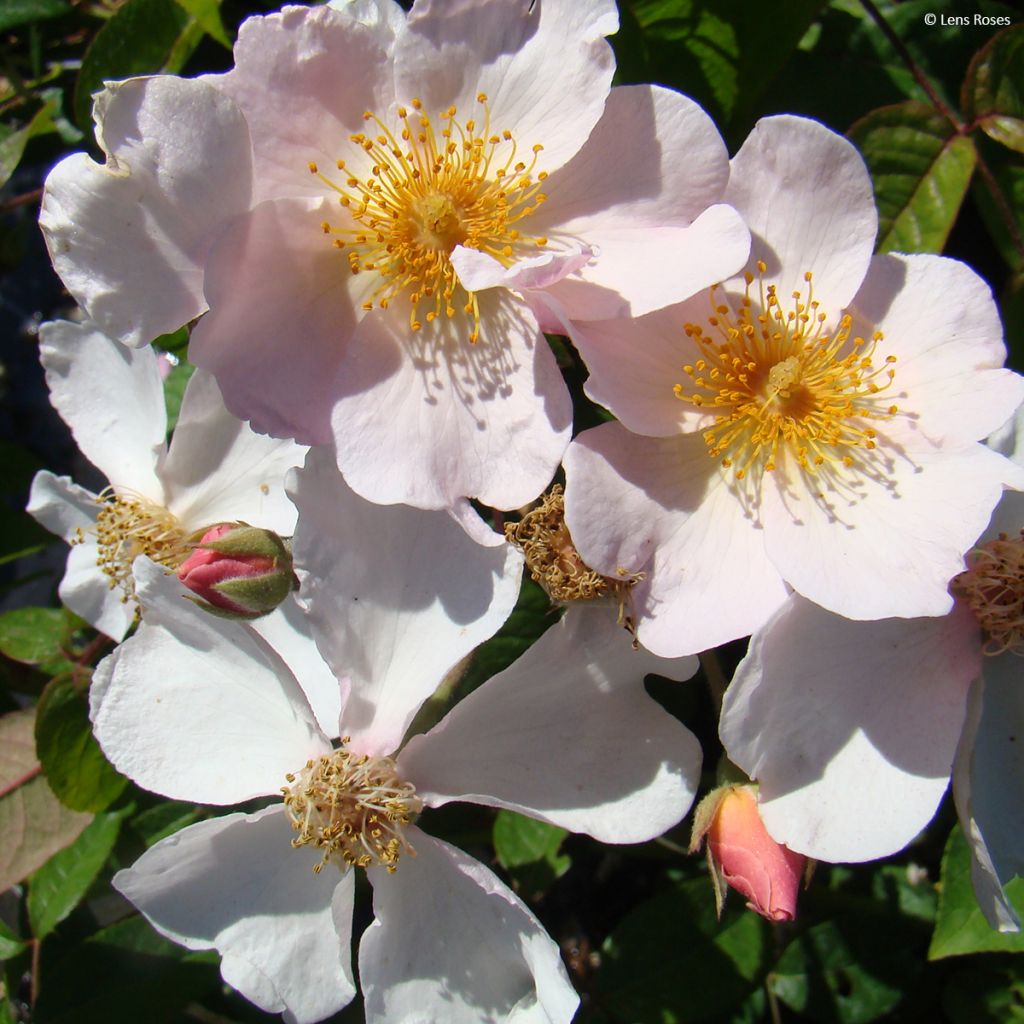

Rosa x moschata 'Kathleen'
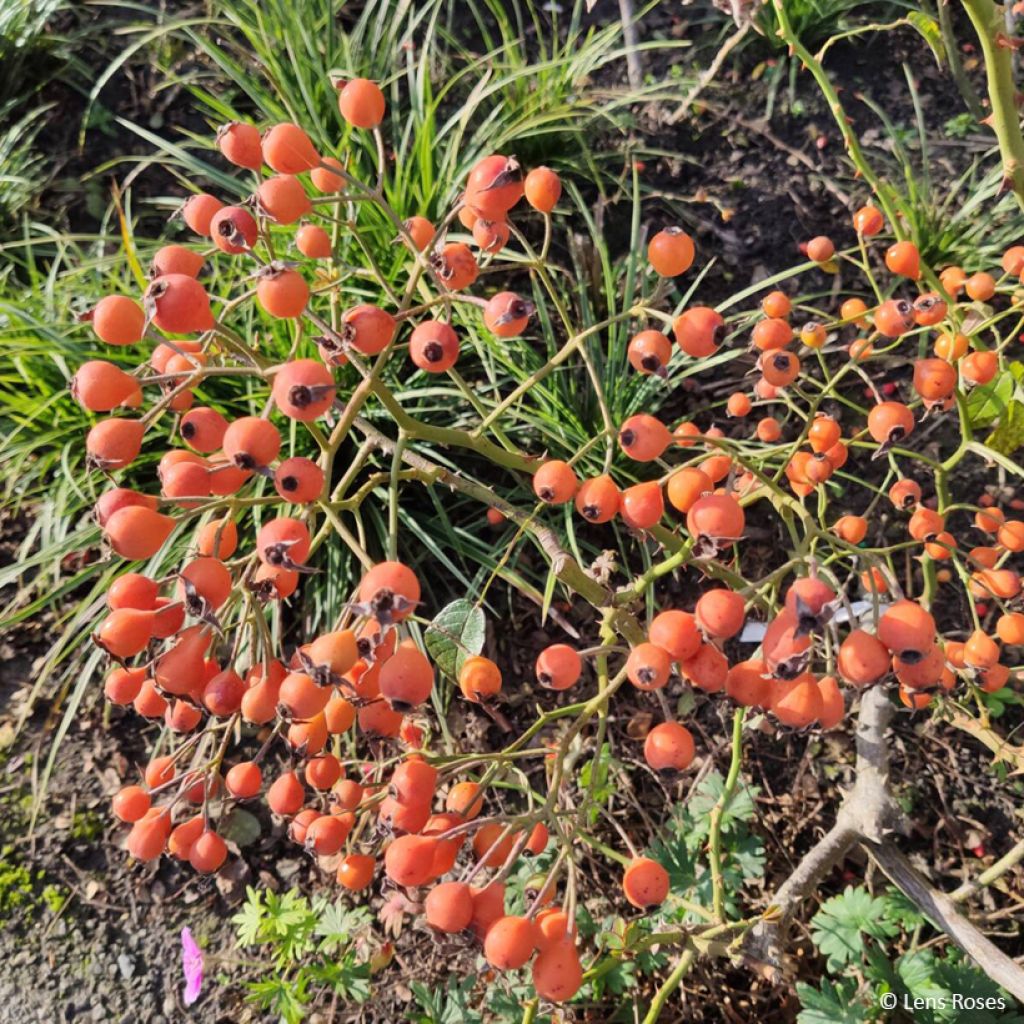

Rosa x moschata 'Kathleen'
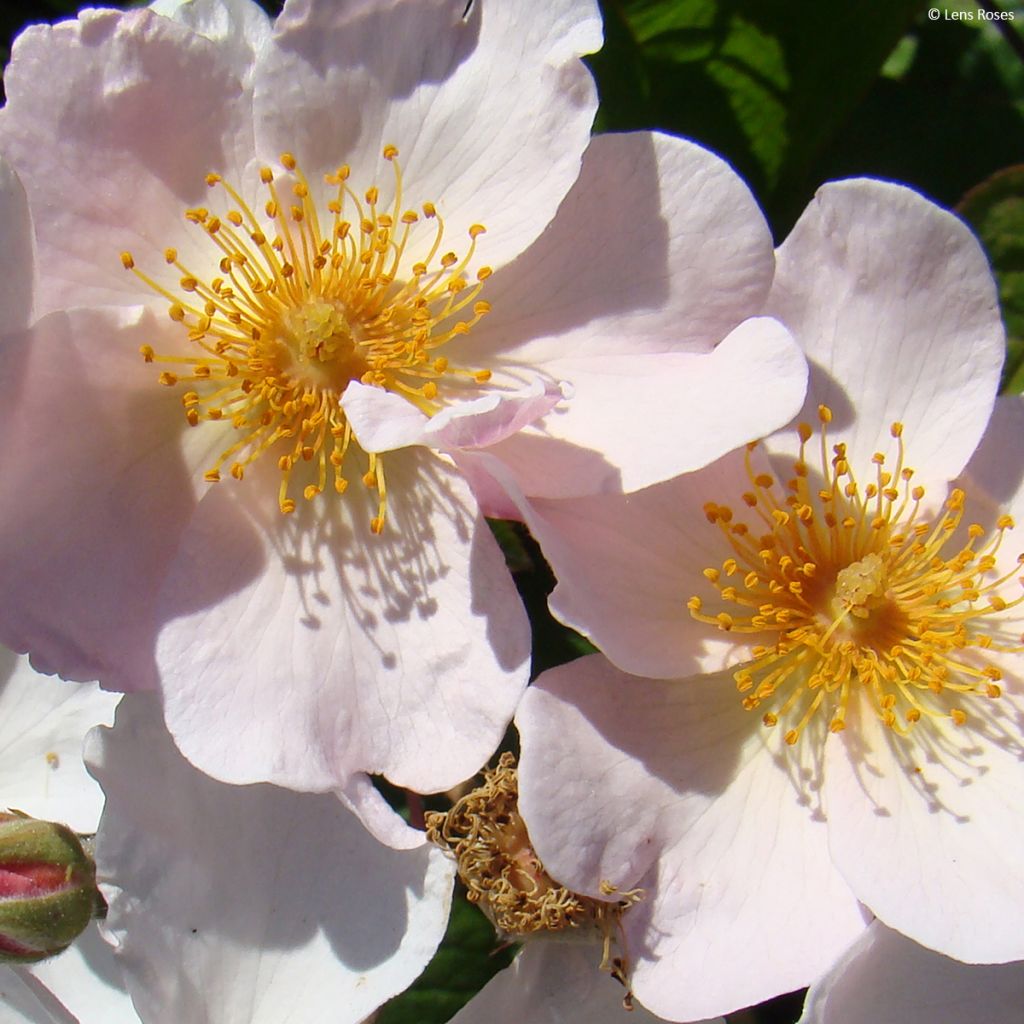

Rosa x moschata 'Kathleen'
Rosa x moschata 'Kathleen'
Rosa x moschata Kathleen
Musk Rose
Thanks to the individuals (for order preparation and shipping), the bare-root rose received seems healthy to me. Planted close to the varieties 'Petite de Terre Franche' & 'Matchball', I am now patiently waiting for it to take root... or not?
Thierry, 03/02/2024
Why not try an alternative variety in stock?
View all →This plant carries a 24 months recovery warranty
More information
We guarantee the quality of our plants for a full growing cycle, and will replace at our expense any plant that fails to recover under normal climatic and planting conditions.
From €5.90 for pickup delivery and €6.90 for home delivery
Express home delivery from €8.90.
From €5.90 for pickup delivery and €6.90 for home delivery
Express home delivery from €8.90.
Does this plant fit my garden?
Set up your Plantfit profile →
Description
The Kathleen rose embodies a bush's elegance and freshness that combines wild roses' resistance and robustness with the abundant flowering of hybrid musk roses. This vigorous bush offers delightful bouquets of simple dog roses of fairly small size, with delicate shades of pink and white, gracefully revealing their stamens as they open flat. The show unfolds almost uninterrupted from June to October, thanks to intense and generous flowering. In an ecological garden, 'Kathleen' provides the much-appreciated nectar for bees, and the orange fruits, called hips, over 1.5 cm (1in) in diameter, feed the birds in autumn and winter. Naturally resistant to diseases, it is easy to grow in any soil, even in partial shade, and requires little maintenance.
The Rosa x moschata 'Kathleen' is a variety obtained in 1924 by the English Reverend Joseph Hardwick Pemberton, who is also responsible for roses such as Penelope, Cornelia, Felicia, Robin Hood.... 'Kathleen' is the result of the hybridisation of 'Daphne' (Hybrid Musk, Pemberton, 1912) and 'Perles des jardins'. The Rosa moschata, which belongs to the rose family, is native to Asia Minor or the Middle East. Although its original species has disappeared, some of its descendants, still present today, generally emit a musky fragrance.
'Kathleen' is a fast-growing variety, forming a dense plant with a bushy habit. It can reach a height and spread of 1.50 metres (5 feet) if trained as a climbing plant. This bush is characterised by relatively thornless and erect branches, which bear leaves composed of seven leaflets, with reddish-brown hues when young, then a lovely deep green, adding a beautiful ornamental appearance to the plant. The deciduous foliage turns yellow before falling for the winter. From June to October, it offers generous and perpetual flowering. The rosebuds, in a pink tone, open into beautiful small flat flowers, single, about 4 cm (2in) in diameter, with 5fivepetals, a very soft pink, whiter towards the centre, surrounding a heart filled with yellow stamens. The flowers are gathered in the form of an extended cluster. To maintain continuous flowering, it is recommended to remove faded flowers regularly. This variety offers abundant flowering, is attractive to bees, and is often continuous until frost if the soil does not dry out too much in summer. It is expected to observe flowers and hips simultaneously on the plant, these fruits being very decorative even in winter. The roses emit a delicate and sweet musk fragrance.
The magnificent 'Kathleen' rose is an excellent choice to enhance your garden. Its roses are bright, warm and generous. It only requires sunny exposure and fertile and moist soil to reach its full potential. With its luxuriant foliage, soft colour and intoxicating fragrance, it is perfect for creating a small hedge, a rose bed or enhancing a landscape composition of light perennial plants. To create harmonious combinations, plant it in groups on large borders, associated with other moschata roses in tender and refined colours or landscape shrub roses in shades of pink, red, white or pale yellow. In a colourful shrub bed, you can associate it with weigelas and dwarf abelias, caryopteris or even lavenders. You can also accompany it with Japanese anemones, phlox paniculata, blue bellflower, red penstemons, delphiniums, Buenos Aires verbena... And let's not forget, for contrast effects, the association with silver foliage such as artemisias and seaside cinerarias, or positioned in front of the dark foliage of boxwood, hornbeams, Japanese privet, cotoneaster... Thanks to its dense vegetation, this rose adapts perfectly to cultivation in a large pot. Just water it regularly and provide the necessary fertilisers to thrive on terraces, balconies, or patios fully.
Report an error about the product description
Rosa x moschata 'Kathleen' in pictures
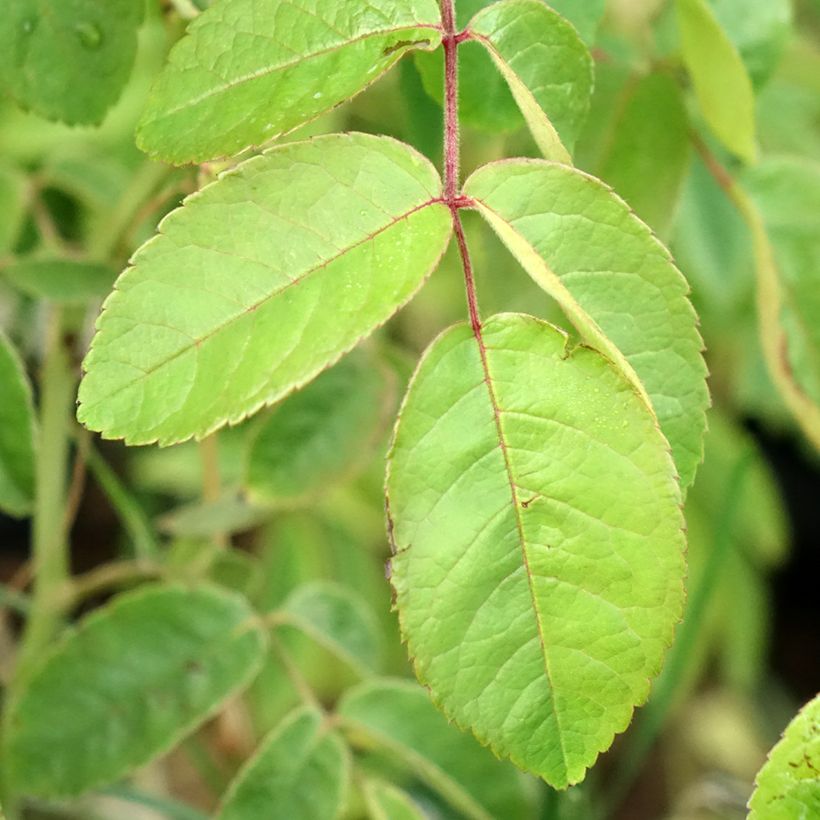

Plant habit
Flowering
Foliage
Botanical data
Rosa
x moschata
Kathleen
Rosaceae
Musk Rose
Cultivar or hybrid
Other Landscape shrub Roses
Planting and care
Plant your Kathleen Rose in a sunny or lightly shaded location. Musky roses are tolerant but do not appreciate excess limestone or waterlogged soil in winter. They will adapt to any garden if the soil is well-worked, not too heavy, and sufficiently rich. Regularly water and fertilise your rose to support its flowering. To plant your rose, work the soil by crumbling it well and placing an amendment, such as blood, fish and bone, at the bottom of the planting hole. Water generously after planting to remove any air pockets. Water regularly for a few weeks to facilitate rooting.
Note that this rose can withstand summer drought, but its flowering will diminish if the summer is too dry and hot.
To encourage repeat flowering, regularly remove faded flower clusters.
Roses may have stains at the end of summer, but they don't harm the rose and are a natural occurrence.
Planting period
Intended location
Care
-
, onOrder confirmed
Reply from on Promesse de fleurs
Roses by producer
Haven't found what you were looking for?
Hardiness is the lowest winter temperature a plant can endure without suffering serious damage or even dying. However, hardiness is affected by location (a sheltered area, such as a patio), protection (winter cover) and soil type (hardiness is improved by well-drained soil).

Photo Sharing Terms & Conditions
In order to encourage gardeners to interact and share their experiences, Promesse de fleurs offers various media enabling content to be uploaded onto its Site - in particular via the ‘Photo sharing’ module.
The User agrees to refrain from:
- Posting any content that is illegal, prejudicial, insulting, racist, inciteful to hatred, revisionist, contrary to public decency, that infringes on privacy or on the privacy rights of third parties, in particular the publicity rights of persons and goods, intellectual property rights, or the right to privacy.
- Submitting content on behalf of a third party;
- Impersonate the identity of a third party and/or publish any personal information about a third party;
In general, the User undertakes to refrain from any unethical behaviour.
All Content (in particular text, comments, files, images, photos, videos, creative works, etc.), which may be subject to property or intellectual property rights, image or other private rights, shall remain the property of the User, subject to the limited rights granted by the terms of the licence granted by Promesse de fleurs as stated below. Users are at liberty to publish or not to publish such Content on the Site, notably via the ‘Photo Sharing’ facility, and accept that this Content shall be made public and freely accessible, notably on the Internet.
Users further acknowledge, undertake to have ,and guarantee that they hold all necessary rights and permissions to publish such material on the Site, in particular with regard to the legislation in force pertaining to any privacy, property, intellectual property, image, or contractual rights, or rights of any other nature. By publishing such Content on the Site, Users acknowledge accepting full liability as publishers of the Content within the meaning of the law, and grant Promesse de fleurs, free of charge, an inclusive, worldwide licence for the said Content for the entire duration of its publication, including all reproduction, representation, up/downloading, displaying, performing, transmission, and storage rights.
Users also grant permission for their name to be linked to the Content and accept that this link may not always be made available.
By engaging in posting material, Users consent to their Content becoming automatically accessible on the Internet, in particular on other sites and/or blogs and/or web pages of the Promesse de fleurs site, including in particular social pages and the Promesse de fleurs catalogue.
Users may secure the removal of entrusted content free of charge by issuing a simple request via our contact form.
The flowering period indicated on our website applies to countries and regions located in USDA zone 8 (France, the United Kingdom, Ireland, the Netherlands, etc.)
It will vary according to where you live:
- In zones 9 to 10 (Italy, Spain, Greece, etc.), flowering will occur about 2 to 4 weeks earlier.
- In zones 6 to 7 (Germany, Poland, Slovenia, and lower mountainous regions), flowering will be delayed by 2 to 3 weeks.
- In zone 5 (Central Europe, Scandinavia), blooming will be delayed by 3 to 5 weeks.
In temperate climates, pruning of spring-flowering shrubs (forsythia, spireas, etc.) should be done just after flowering.
Pruning of summer-flowering shrubs (Indian Lilac, Perovskia, etc.) can be done in winter or spring.
In cold regions as well as with frost-sensitive plants, avoid pruning too early when severe frosts may still occur.
The planting period indicated on our website applies to countries and regions located in USDA zone 8 (France, United Kingdom, Ireland, Netherlands).
It will vary according to where you live:
- In Mediterranean zones (Marseille, Madrid, Milan, etc.), autumn and winter are the best planting periods.
- In continental zones (Strasbourg, Munich, Vienna, etc.), delay planting by 2 to 3 weeks in spring and bring it forward by 2 to 4 weeks in autumn.
- In mountainous regions (the Alps, Pyrenees, Carpathians, etc.), it is best to plant in late spring (May-June) or late summer (August-September).
The harvesting period indicated on our website applies to countries and regions in USDA zone 8 (France, England, Ireland, the Netherlands).
In colder areas (Scandinavia, Poland, Austria...) fruit and vegetable harvests are likely to be delayed by 3-4 weeks.
In warmer areas (Italy, Spain, Greece, etc.), harvesting will probably take place earlier, depending on weather conditions.
The sowing periods indicated on our website apply to countries and regions within USDA Zone 8 (France, UK, Ireland, Netherlands).
In colder areas (Scandinavia, Poland, Austria...), delay any outdoor sowing by 3-4 weeks, or sow under glass.
In warmer climes (Italy, Spain, Greece, etc.), bring outdoor sowing forward by a few weeks.

































